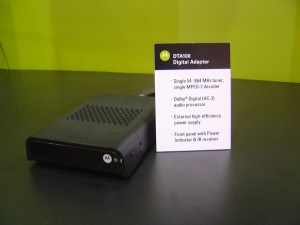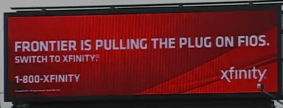
This digital transport adapter from Motorola is commonly installed on secondary television sets, such as those found in bedrooms, offices, or the kitchen to ensure reception of digital cable television channels without the size and expense of a traditional cable set top box.
Time Warner Cable has announced it will cease analog cable television service within five years, as the cable company embarks on a wholesale transition to all-digital cable.
The announcement came from CEO Glenn Britt during this morning’s investor conference call, and represents a major transition for the cable operator and its customers.
While Time Warner Cable already runs older digital cable systems in New York City and parts of Los Angeles, today’s announcement represents the company’s de-emphasis on Switched Digital Video (SDV), the technology the cable operator initially supported to free up channel space on its systems. SDV allowed Time Warner Cable to maintain analog cable lineups for consumers who detest cable set top boxes. Instead of converting the entire lineup to digital, Time Warner changed the way it delivered certain digital cable channels, only sending their signals to viewers in neighborhoods actually watching them at the time.
“We always said we would supplement switched digital video with going all-digital,” Britt said. “Our plan is to migrate all systems to all-digital over the next five years.”
The decision means Time Warner Cable has opted to follow Comcast’s lead towards all-digital systems, instead of trying to support both analog and digital video.
Britt said the company’s first target city for the all-digital switch is Augusta, Maine. Customers there will be given the choice of taking the cable company’s traditional set top box or new Digital Transport Adapters (DTAs), devices which convert digital signals into standard definition analog video, suitable for televisions where customers may not need or want a full-powered cable box. DTAs have traditionally been given away in small numbers or rented for a nominal fee (usually under $2 a month) by other cable operators like Comcast. But Time Warner has not made any specific announcements about pricing for impacted subscribers just yet.
When complete, every Time Warner cable subscriber will need to have either a cable box, a DTA, or CableCARD for every cable-connected television in the home.


 Subscribe
Subscribe





